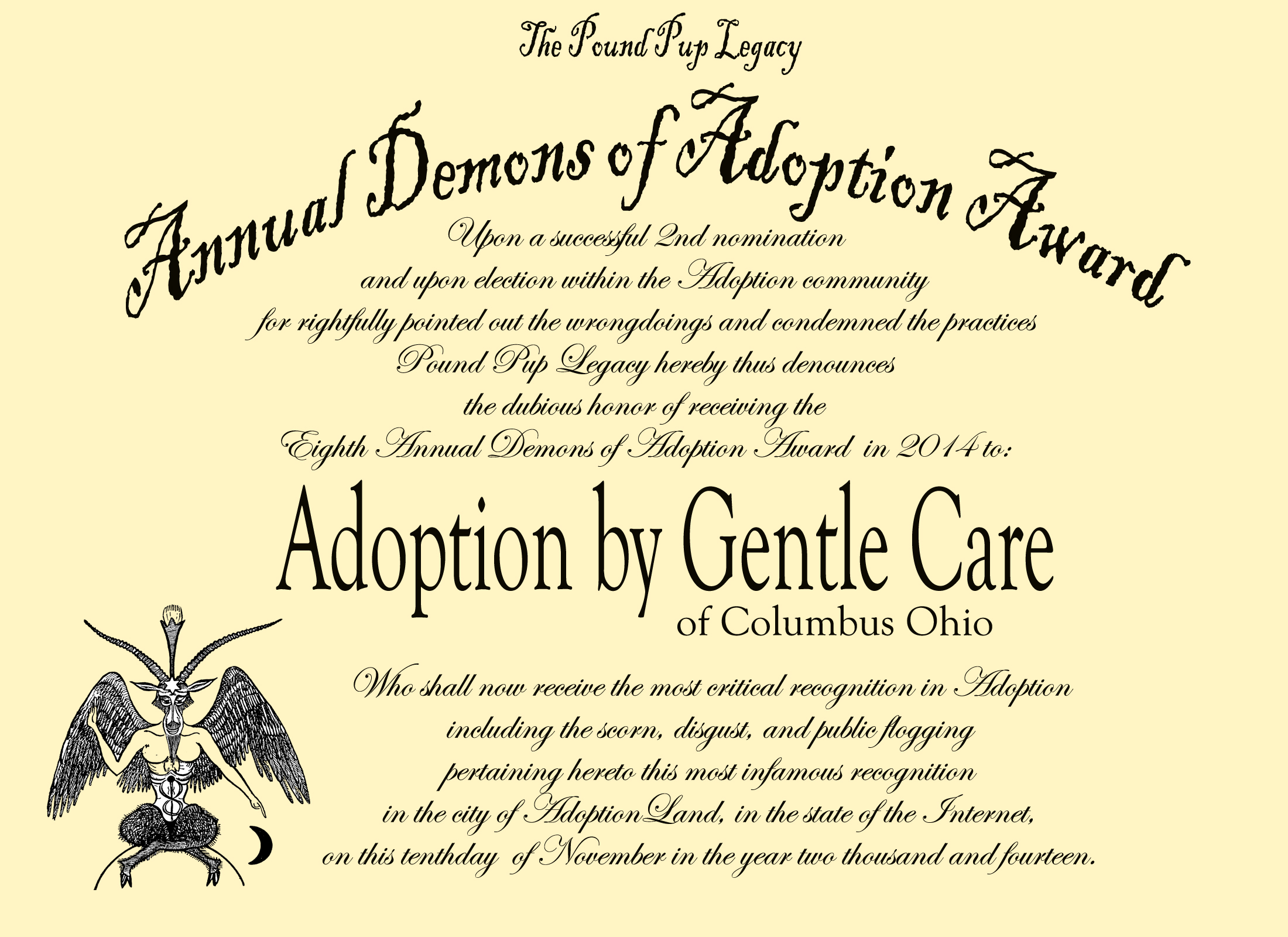On July 2, 2014 during the Court of Appeals status hearing, counsel for AGC let it out that Camden was sick. He has Septo-Optic Dysplasia* also known as De Morsier Syndrome.
They did not say much so the full extent of Camden’s condition is not know. It is understood that he is not at either end , meaning only lightly affected nor horrible affected, but to date Carri has not been allowed to speak to any of his doctors or know about the care of her child.
Oddly enough, Camden was/ is still on Carri’s insurance plan. Legally, Adoption by Gentle Care is supposed to be the one’s responsible for all of Camden’s care including his medical coverage, but they didn’t take Camden off Carri’s plan. As one must be a legal dependent to be on another’s insurance plan, one could think that this would fall under insurance fraud? After all, how can one be deemed NOT legally a mother, but then the same child a dependent?
*Septo-optic dsyplasia (SOD) is a birth defect characterized by a malformed optic disk and nerve, pituitary deficiencies and often the absence of the septum pellucidum which separates the ventricles of the brain. As a consequence of these abnormalities, visual impairment and inadequate growth hormones may occur.
Currently, there is no way to correct the optical nerve problem as it is part of the brain. It will take a medical breakthrough to help those with optic nerve blindness to see.
The extent of pituitary hormone involvement varies from growth hormone deficiency to panhypopituitarism. Associated hormonal problems can include hypoglycemia and diabetes insipidus along with insufficient prolactin, adrenocorticotropic (ACTH), and thyrotropin. These problems are treated with hormone replacement therapy.
Symptoms are present at birth and primarily include decreased or no vision. Involuntary movement of the eyeballs (nystagmus), variable pupil dilation and deviation of the eyes, also may occur. Some have prolonged yellow skin discoloration (jaundice) at birth. A child that falls off the growth chart will alert professionals of a possible growth hormone deficiency. Some with (SOD) have mental retardation or learning disabilities.
Growth hormone deficiency is the most common endocrinological abnormality, followed by deficiencies of thyroid-stimulating hormone, of corticotropic hormone and of vasopressin.
Growth hormone deficiency. Clinical signs of growth hormone deficiency include a decreased growth rate and neonatal hypoglycemia. The former may not be clinically evident within the first four years of life because of elevated prolactin levels that stimulate normal growth during this period.
Hypothyroidism. Clinical signs of hypothyroidism include prolonged neonatal jaundice, decreased growth rate and developmental delay.
Hypocorticalism. Clinical signs of hypocorticalism are neonatal hypoglycemia, hypotension, recurrent infections, seizures, developmental delay and poikilothermia (impaired temperature regulation). Low corticotropin levels are quite dangerous because they place children at risk for sudden death during physical stress such as febrile illness (the child is unable to regulate blood pressure and blood sugars in response to the physical stresses). Owing to the poikilothermia, such children also experience dangerously high fevers during illness and unusually low body temperatures during healthy periods.
Diabetes insipidus. Children with optic nerve hypoplasia also may have coexisting diabetes insipidus due to posterior pituitary abnormalities. The absence of the pituitary infundibulum and the posterior pituitary bright signal on MRI indicates posterior pituitary deficiency with consequent diabetes insipidus. Clinical signs of diabetes insipidus include polydipsia, polyuria and hypernatremia. This further increases the risk of death in response to physical stress, as children with diabetes insipidus often become severely dehydrated during stress, which hastens the development of shock.
Early identification and treatment of endocrine deficits has the potential to prevent significant mortality. Once a diagnosis of septo-optic dysplasia has been confirmed, an extensive evaluation of the hypothalmic-pituitary axis is necessary, and appropriate hormone replacement should be initiated. The endocrine deficits can be progressive; therefore, continued follow-up is indicated even if deficits are not initially identified.
Pathogenesis. Early researchers attributed optic nerve hypoplasia to a primary failure of retinal ganglion differentiation. This, however, fails to explain the frequent coexistence of optic nerve hypoplasia with other CNS abnormalities. The frequent association of cerebral hemispheric abnormalities with optic nerve hypoplasia led to the hypothesis that there may be a disruption of neuronal guidance mechanisms that regulate the migration of both cerebral hemispheric neurons and optic nerve axons in utero.
Clinical Assessment
MRI is an important tool for the diagnosis of children with optic nerve hypoplasia. Cerebral hemispheric anomalies are predictive of neurodevelopmental deficits, and neurohypophyseal abnormalities are predictive of endocrinological deficiencies.
Evaluation of the hypothalamic-pituitary axis is imperative in children with optic nerve hypoplasia. Children with endocrinological deficiencies are at risk for impaired growth, hypoglycemia, developmental delay, seizures and death. Early detection of abnormalities and proper hormone replacement may prevent or limit these complications. Parents, pediatricians and neurologists of these children can follow them for clinical signs of hypopituitarism, including monitoring their growth rate.
Treatment
Infants who initially appear blind may have superimposed delayed visual maturation and therefore may have improvement of their vision during the first several months of life. In children with unilateral or asymmetric bilateral optic nerve hypoplasia, a superimposed amblyopia may reduce vision. The amblyopia should be treated with a trial of occlusion therapy. Children with hypopituitarism should be treated with appropriate hormone replacement.
The cause of SOD is not known. There is no evidence that this is a hereditary disorder. It is a rare disorder that affects males and females in equal numbers. Currently, it is thought that SOD is a more involved level of Optic Nerve Hypoplasia. SOD is often referred to as De Morsier Disease or Dwarfism-Septo-Optic-Dysplasia.
As of yet, there is no cure for De Morsier syndrome. If hormonal deficiencies are identified early and are properly corrected, some of the symptoms can be prevented. With the supportive treatments that are currently available, children with this condition can live happily well into adulthood.






